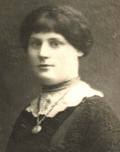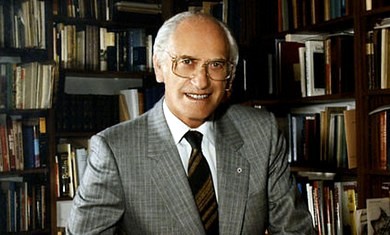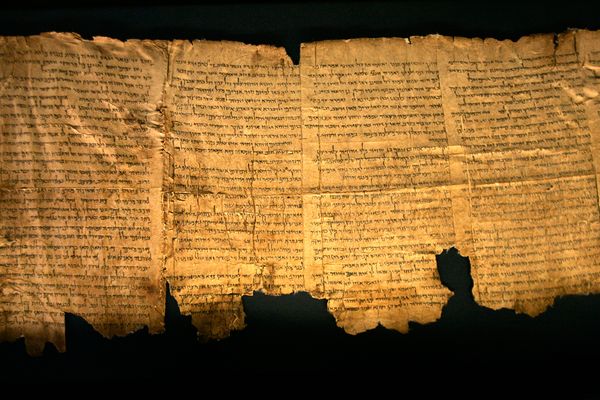 “I do not know of a single woman in Yiddish literature who wrote better than she did,” Isaac Bashevis Singer once commented about the little-known novelist and story writer Esther Kreitman, whose 1936 book, The Dance of the Demons, has just been reissued by the Feminist Press of New York.
“I do not know of a single woman in Yiddish literature who wrote better than she did,” Isaac Bashevis Singer once commented about the little-known novelist and story writer Esther Kreitman, whose 1936 book, The Dance of the Demons, has just been reissued by the Feminist Press of New York.
In truth, Singer might have done much more to encourage Kreitman’s literary efforts, since she was his older sister by 13 years. Their younger brother, Israel Joshua Singer, also became one of Yiddish literature’s bright lights. Like the celebrated Bronte family of English literary fame, the Singer family of Bilgoraj, and later Warsaw, Poland, produced three remarkable writers whose shared upbringing by a devout, mystically-inclined rabbinical father and a sternly rationalistic and common-sensical mother, has come under scrutiny by generations of critics and biographers.
If the Bronte comparison does not acknowledge the special difficulties often faced by women writers — difficulties that, in Kreitman’s case, seemed to draw her to the edge of madness — Michigan professor Anita Norich offers a more apt comparison. “Perhaps only in the case of William, Henry and Alice James do we have a comparable set of siblings who enjoyed very different reputations as literati and intellectuals,” she writes. The Jameses, like the Singers, produced two towering literary-intellectual brothers (psychologist William and writer Henry) and a neglected and long-suffering sister (the bedridden diarist Alice).
 Kreitman’s first novel, Der Sheydims Tants (Dance of the Demons), was published in Yiddish in Poland in 1936, and in English translation (titled Deborah) in 1946. A second novel, Brilyantn (Diamonds) appeared in 1944 and a book of short stories, Yikhes (Lineage) came out in 1949. Unhappy, unstable, and said to be either epileptic or possessed by dybbuks, Kreitman died in London in 1954. Although her works received favourable critical attention, she remained an obscure talent, overshadowed by her famous brothers. So eclipsed was her reputation that literary critic Irving Howe, who must have known better, felt it safe to write in 1980 that “There are two Singers in Yiddish literature, and while both are very good, they sing in different keys.”
Kreitman’s first novel, Der Sheydims Tants (Dance of the Demons), was published in Yiddish in Poland in 1936, and in English translation (titled Deborah) in 1946. A second novel, Brilyantn (Diamonds) appeared in 1944 and a book of short stories, Yikhes (Lineage) came out in 1949. Unhappy, unstable, and said to be either epileptic or possessed by dybbuks, Kreitman died in London in 1954. Although her works received favourable critical attention, she remained an obscure talent, overshadowed by her famous brothers. So eclipsed was her reputation that literary critic Irving Howe, who must have known better, felt it safe to write in 1980 that “There are two Singers in Yiddish literature, and while both are very good, they sing in different keys.”
Born in Bilgoraj in 1891, Kreitman was brought up with little expectation that a woman could or should be anything other than a good wife and homemaker. In Dance of the Demons, which is supposedly largely autobiographical, the young daughter Deborah listens as her rabbinical father, Reb Avram Ber, praises her brother as a brilliant Talmudist in the making, then asks him to predict her own future. “What are you going to be one day? Nothing, of course!” he replies. In his heart of hearts, Reb Avram believes that his wife’s parents had erred in allowing his wife to become educated, and he is determined not to repeat the mistake with his daughter. (Israel Joshua Singer once recounted a real-life episode in which Esther asked their mother what she could be when she grew up, and received the reply, “What can a girl be?” He added that he understood why his sister often seemed intensely jealous of him.)
Dance of the Demons follows Reb Avram Ber and family through their years of poverty and devoted religious service in several small towns, exposing the hypocrisies of feeble-minded townsfolk who elevate their undeserving rabbi into a saintlike “tsadik” and the cynicism of a younger generation that turns from religion to socialism, all in search of their golden calves. Eventually the provincial family lands in the big degraded metropolis of Warsaw, with its unwashed and unlearned Jews and Jewish criminal gangs. As a sort of precursor to the “beth din” depicted so vividly in I. B. Singer’s In My Father’s Court, Kreitman’s Reb Avram also maintains a rabbinical court in which he untangles some extraordinary predicaments, such as the dilemma of a Jewish gangster whose daughter is impregnated by one of her two husbands.
Reb Avram is soon facing a thorny dilemma of his own: his own daughter’s growing reluctance to go through with an arranged marriage, which becomes the central drama of the novel. Deborah, bitterly unhappy but still dutiful, becomes convinced that her feelings don’t count and the match is merely her family’s way of getting rid of her once and for all. “From that day onward she felt like a stranger in the house — a superfluous stranger. Her father, her mother, her brother — she regarded them all as acquaintances who were accommodating her as an unwanted guest and were looking forward to the hour of her departure. She began to look forward to it herself. That sense of resignation, oppressive and bewildering, never took leave of her no matter where she went or what she did.”
Again, Kreitman’s art mirrored her life; the novel is supposedly based on her own arranged marriage to a man she had never met, a doomed and intensely unhappy match that produced a single son, Morris Kreitman (who, as Maurice Carr, became the novel’s translator). In real life, as Esther and family journeyed by train to meet her intended, she showed her mother some of her writings: her mother ordered her to tear them up and throw them out the window.
Writer-psychoanalyist Janet Hadda, in her book Isaac Bashevis Singer: A Life, accuses the Nobel laureate writer of cold-hearted neglect of his sister, claiming that he ignored her pleas for funds and refused to help her move from England to America. Bashevis visited her only once in the postwar era. “When I came to London, she was weirdly glad to see me,” he later recalled. “She loved me with a great love that often seemed to me exaggerated and frightening . . . . Even those who could not get along with her praised her good-heartedness and refinement. But who can live with a volcano? After a few days of listening to her complaints and blame, I became weary. She could literally drive a person crazy.”
Despite her lifetime of neglect from her family and the public at large, there is no question that Kreitman’s legend lives on in I. B. Singer’s fiction. She was his model for the title character in his story Yentl, about a girl who masquerades as a male yeshiva student in order to get an education (later made into a film starring Barbra Streisand). Kreitman may also have served as the model for other passionate and unstable females in I. B.’s fiction, from Masha in Enemies: A Love Story to Magda in The Magician of Lublin.
As a novel, Dance of the Demons stands up well as a truthful and delicate portrait of memorable characters caught in the grip of changing times. An interesting writer, Kreitman holds special significance for being a woman operating in a somewhat closed shop. Would The Dance of The Demons have been rescued from obscurity even if she had been unrelated to the Singers? One would hope so. But her work and legend is so intricately intermeshed with her famous brothers that the question seems impossible to answer. ♦
© 2009






